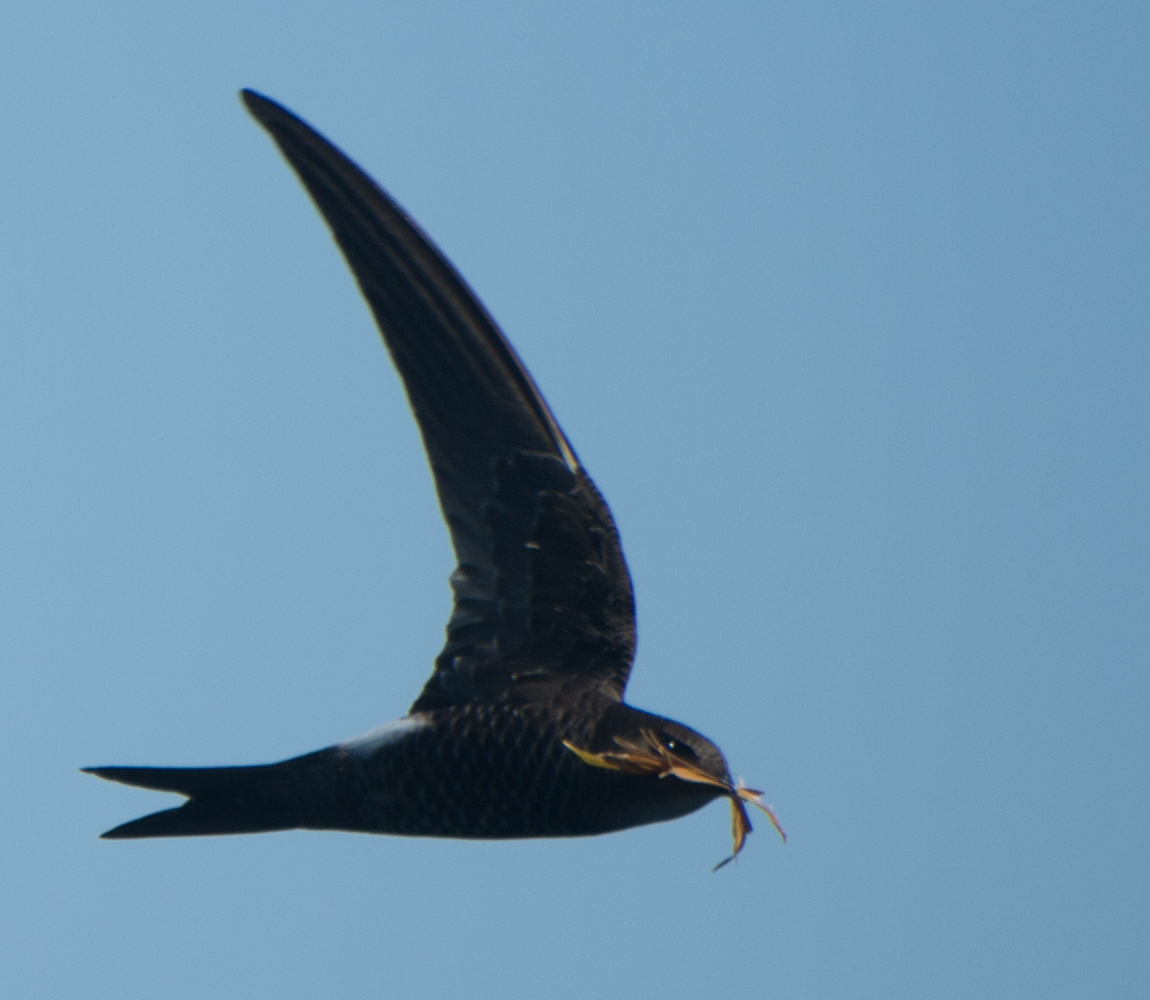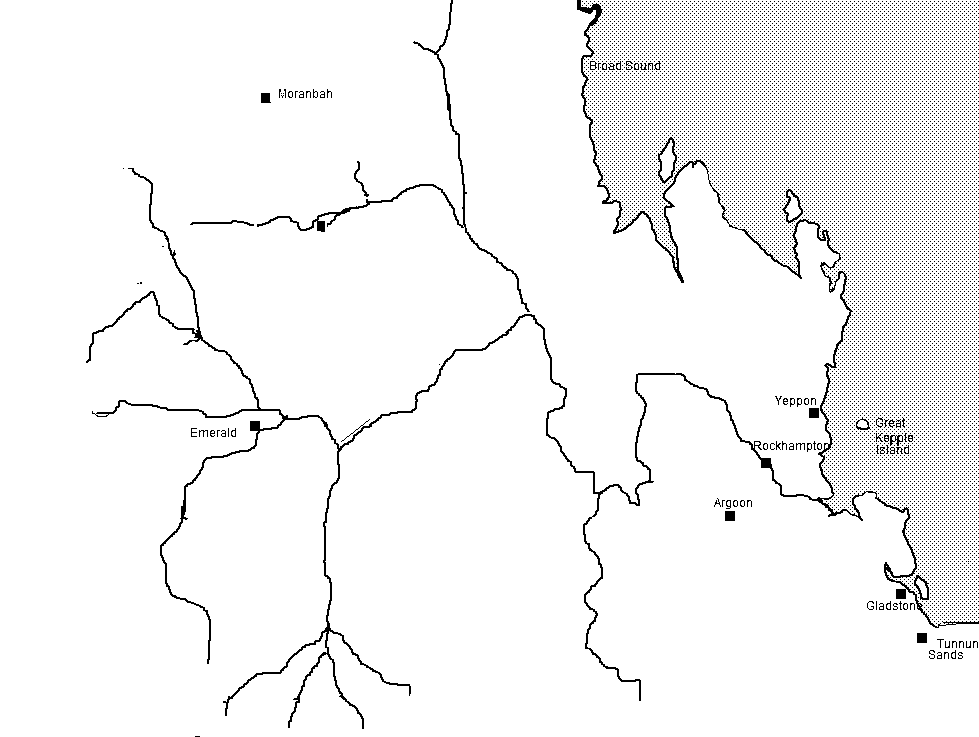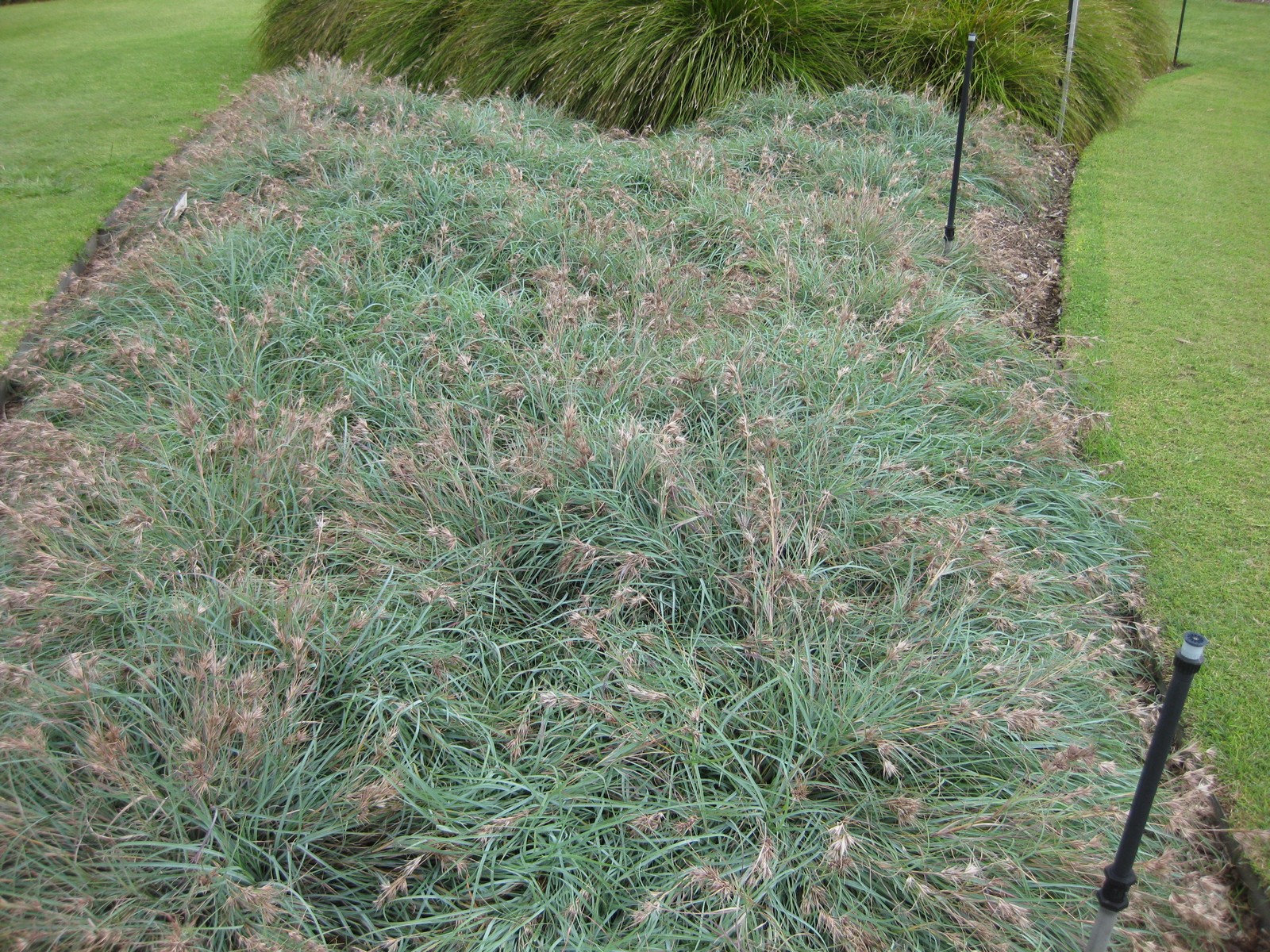|
Shoalwater Bay Military Training Area
The Shoalwater Bay Military Training Area is a heritage-listed military installation at Byfield Road, Byfield, Queensland, Byfield, Shire of Livingstone, Queensland, Australia. It is a large, relatively undisturbed and intact natural system with a wide variety of coastal landforms and a high level of biodiversity. It contains a diverse range of marine and coastal wetland landscapes, vegetation types and ecosystems. It was added to the Australian Commonwealth Heritage List on 22 June 2004. Description Shoalwater Bay Military Training Area is approximately , north-west of Byfield. The main geomorphic units comprise hilly to mountainous terrain, aeolian sand dunes, undulating and rolling terrain and flat areas of riverine alluvium. The permutations of geomorphological, pedological and microclimatic environments support diverse vegetation types, for which 58 floristic communities have been recognised within 13 structural forms. Rainfall decreases markedly westwards and sharp veg ... [...More Info...] [...Related Items...] OR: [Wikipedia] [Google] [Baidu] |
Byfield, Queensland
Byfield is a rural Suburbs and localities (Australia), locality in the Shire of Livingstone, Queensland, Australia. In the , the locality of Byfield had a population of 323 people. Geography Byfield is located in the midst of the Byfield National Park in Central Queensland, north west of the state capital Brisbane and north of the regional centre of Rockhampton. It is within the local government in Australia, local government area of Shire of Livingstone (between 2008 and 2013, it was within the Rockhampton Region). ''Waterpark Creek'' forms much of the north-eastern boundary. ''Sandy Creek'', a tributary of ''Waterpark'', also forms part of that boundary. History The locality's name is thought to be a corruption of Fifefield, a name shown on a 1859 sketch by pastoralist Colin Archer. Byfield State School opened its doors on 12 November 1923. Demographics In the , the town of Byfield had a population of 275 people. In the , the locality of Byfield had a population of ... [...More Info...] [...Related Items...] OR: [Wikipedia] [Google] [Baidu] |
Apus Pacificus
The Pacific swift (''Apus pacificus'') is a species of bird that is part of the Swift family. It breeds in eastern Asia. It is strongly migratory, spending the northern hemisphere's winter in Southeast Asia and Australia. The general shape and blackish plumage recall its relative, the common swift, from which it is distinguished by a white rump band and heavily marked underparts. The sexes are identical in appearance, although young birds can be identified by pale fringes to the wing feathers that are absent in adults. This swift's main call is a screech typical of its family. It is one of a group of closely related Asian swifts formerly regarded as one species. The Pacific swift is found in a wide range of climatic zones and habitats. It breeds in sheltered locations such as caves, natural rock crevices or under the roofs of houses. The nest is a half-cup of dry grass and other fine material that is gathered in flight, cemented with saliva and attached to a vertical surface. ... [...More Info...] [...Related Items...] OR: [Wikipedia] [Google] [Baidu] |
Fitzroy River (Queensland)
The Fitzroy River ( Darumbal: ) is a river in Central Queensland, Australia. Its catchment covers an area of , making it the largest river catchment flowing to the eastern coast of Australia. It is also the largest river basin that discharges onto the Great Barrier Reef. Course and features Formed by the confluence of the Mackenzie and Dawson rivers that drain the Expedition Range and the Carnarvon Range respectively, the Fitzroy River rises near Duaringa and flows initially north by east, then northward near the Goodedulla National Park. The river then flows in an easterly direction near the Lake Learmouth State Forest and parallel with the Bruce Highway through the settlement of , before turning south to where the river is crossed by the Bruce Highway. After flowing through Rockhampton, the river flows south by east past the Berserker Range past Humbug Point to the south of the Flat Top Range and eventually discharging into Keppel Bay in the Coral Sea near the MacKenzi ... [...More Info...] [...Related Items...] OR: [Wikipedia] [Google] [Baidu] |
Araucaria Cunninghamii
''Araucaria cunninghamii'' is a species of ''Araucaria'' known as hoop pine. Other less commonly used names include colonial pine, Queensland pine, Dorrigo pine, Moreton Bay pine and Richmond River pine. The scientific name honours the botanist and explorer Allan Cunningham, who collected the first specimens in the 1820s. Description The leaves on young trees are awl-shaped, 1–2 cm long, about 2 mm thick at the base, and scale-like, incurved, 1–2 cm long and 4 mm broad on mature trees. The cones are ovoid, 8–10 cm long and 6–8 cm diameter, and take about 18 months to mature. They disintegrate at maturity to release the nut-like edible seeds. Subspecies There are two varieties: *''Araucaria cunninghamii'' var. ''cunninghamii'' – Australia, from northeast New South Wales to east-central Queensland, at 0–1,000 m elevation. *''Araucaria cunninghamii'' var. ''papuana'' – New Guinea, on the mountains of Papua New Guinea, and in Irian Jaya, ... [...More Info...] [...Related Items...] OR: [Wikipedia] [Google] [Baidu] |
Eucalyptus Platyphylla
''Eucalyptus platyphylla'', commonly known as poplar gum or white gum, is a species of medium-sized tree that is endemic to Queensland. It has smooth. powdery bark, heart-shaped, egg-shaped to almost round leaves, flower buds in groups of seven, white flowers and conical to hemispherical fruit. Description ''Eucalyptus platyphylla'' is a tree that typically grows to a height of and forms a lignotuber. It has smooth, powdery, pale pink to greenish white bark. Young plants and coppice regrowth have deltoid leaves that are long and wide. Adult leaves are the same shade of dull greyish green on both sides, heart-shaped to egg-shaped or almost round, long and wide on a petiole long. The flower buds are arranged in leaf axils in groups of seven on an unbranched peduncle long, the individual buds sessile or on pedicels up to long. Mature buds are oval to almost spherical, long and wide with a rounded to conical operculum. Flowering occurs from June to October and the flowers ... [...More Info...] [...Related Items...] OR: [Wikipedia] [Google] [Baidu] |
Eucalyptus Populnea
''Eucalyptus populnea'', commonly known as poplar box, bimble box or bimbil box, is a species of small to medium-sized tree that is endemic to eastern Australia. It has rough, fibrous or flaky bark on the trunk and branches, egg-shaped, elliptical or more or less round leaves, flower buds arranged in groups of seven to fifteen or more, white flowers and conical, hemispherical or cup-shaped fruit. Description ''Eucalyptus populnea'' is a tree that typically grows to a height of and forms a lignotuber. It has rough, fibrous or flaky, greyish bark on the trunk and larger branches, smooth grey bark that is shed in short ribbons from the thinner branches. Young plants and coppice regrowth have egg-shaped to almost round, dull greyish green leaves that are long and wide. The crown has leaves that are the same shade of glossy green on both sides, egg-shaped, elliptical or more or less round leaves that are long and wide tapering to a petiole long. The flower buds are mostly ar ... [...More Info...] [...Related Items...] OR: [Wikipedia] [Google] [Baidu] |
Heteropogon Contortus
''Heteropogon contortus'' is a tropical, perennial tussock grass with a native distribution encompassing Southern Africa, southern Asia, Northern Australia, Oceania, and southwestern North America. The species has also become a naturalised weed in tropical and subtropical regions in the Americas and East Asia. The plant grows to in height and is favoured in most environments by frequent burning. The plants develop characteristic dark seeds with a single long awn at one end and a sharp spike at the other. The awn becomes twisted when dry and straightens when moistened, and in combination with the spike is capable of drilling the seed into the soil. The species is known by many common names, including black speargrass, tanglehead, ''steekgras'' (in Afrikaans) and ''pili'' (in Hawaiian, ultimately from Proto-Austronesian *''pilit''₁ "to adhere/stick"). ''H. contortus'' is a valuable pasture species across much of its range. However, it has also been responsible for the eliminat ... [...More Info...] [...Related Items...] OR: [Wikipedia] [Google] [Baidu] |
Heteropogon Triticeus
''Heteropogon triticeus '' is a tropical, perennial tussock grass with a native distribution encompassing Tropical and Temperate Asia, Malesia and Northern and Eastern Australia. The plant grows to over in height and is favoured in most environments by frequent burning Combustion, or burning, is a high-temperature exothermic redox chemical reaction between a fuel (the reductant) and an oxidant, usually atmospheric oxygen, that produces oxidized, often gaseous products, in a mixture termed as smoke. Combust .... The plants develop characteristic dark seeds with a single long awn at one end and a sharp spike at the other. The awn becomes twisted when dry and straightens when moistened, and in combination with the spike is capable of drilling the seed into the soil. The species is known as giant spear grass, and is closely related to the more common black spear grass, with which it is commonly associated in Northern Australia. Uses References Nativeseeds.com.au: ''H ... [...More Info...] [...Related Items...] OR: [Wikipedia] [Google] [Baidu] |
Themeda Australis
} ''Themeda triandra'' is a species of perennial tussock-forming grass widespread in Africa, Australia, Asia and the Pacific. In Australia it is commonly known as kangaroo grass and in East Africa and South Africa it is known as red grass and red oat grass or as ''rooigras'' in Afrikaans. Kangaroo grass was formerly thought to be one of two species, and was named ''Themeda australis''. The plant has traditional uses as food and medicine in Africa and Australia. Indigenous Australians harvested it to make bread and string for fishing nets around 30,000 years ago. It was used as livestock feed in early colonial Australia, but this use was largely replaced by introduced plants. there is a large government-funded project underway to investigate the possibility of growing kangaroo grass commercially in Australia for use as a regular food source for humans. Description ''Themeda triandra'' is a perennial grass which grows in dense tufts up to tall and wide. It flowers in summ ... [...More Info...] [...Related Items...] OR: [Wikipedia] [Google] [Baidu] |
Eucalyptus Exserta
''Eucalyptus exserta'', commonly known as Queensland peppermint, peppermint, bendo, yellow messmate or messmate, is a species of tree or a Mallee (habit), mallee and is Endemism, endemic to eastern Australia. It has hard, fibrous bark, lance-shaped adult leaves, flower buds in groups of seven, white flowers and hemispherical or cup-shaped fruit. Description ''Eucalyptus exserta'' can grow as a mallee (habit), mallee to a height of or as a tree to and forms a lignotuber. It has hard, rough, fissured, fibrous grey bark, usually from the base to the small branches. The slightly glossy to dull usually green adult leaves are arranged alternately, narrow lance-shaped to lance-shaped, long and wide on a Petiole (botany), petiole long. The flower buds are arranged in leaf wikt:axil, axils in groups of seven on an unbranched Peduncle (botany), peduncle long, the individual buds on Pedicel (botany), pedicels long. Mature buds are oval, long and wide with a conical Operculum (bot ... [...More Info...] [...Related Items...] OR: [Wikipedia] [Google] [Baidu] |
Eucalyptus Drepanophylla
''Eucalyptus crebra'', commonly known as the narrow-leaved ironbark, narrow-leaved red ironbark or simply ironbark, and as muggago in the indigenous Dharawal language, is a species of small to medium-sized tree endemic to eastern Australia. It has hard, rough "ironbark" from its trunk to small branches, linear to lance-shaped adult leaves, flower buds in groups of seven, nine or eleven, white flowers and cup-shaped, barrel-shaped or hemispherical fruit. A variable species, it grows in woodland and forest from the Cape York Peninsula to near Sydney. It is an important source of nectar in the honey industry and its hard, strong timber is used in construction. Description ''Eucalyptus crebra'' is a tree that typically grows to a height of and forms a lignotuber. It has persistent thick, rough, deeply furrowed, greyish black "ironbark" from the base of its trunk to the small branches. Young plants and coppice regrowth have linear to lance-shaped or curved leaves long and wide. Adul ... [...More Info...] [...Related Items...] OR: [Wikipedia] [Google] [Baidu] |






